CAREERS



Sport + data = high performance p12
The maths driving transport careers p16
Figuring out nature’s formula p20

Global temperatures reached record highs in recent years – and even after accounting for known sources of global warming, scientists still struggled to explain why.
Part of the answer may lie in sea ice, whose loss affects weather patterns, ocean circulation and marine ecosystems worldwide. Recently, mathematicians from Macquarie University discovered how heat is conducted in sea ice, by creating models to demonstrate that pockets of salt water trapped when ice freezes enhance its thermal conductivity. Chimneys of saltwater form in the ice, potentially causing it to crack. These new insights will be used in large-scale climate models, potentially leading to more accurate predictions of future conditions in the polar regions and beyond.
Macquarie is a leader in sustainability, ranked 24th in the world according to the Times Higher Education Impact Rankings, 2024, and #2 in Australia in the QS World University Rankings: Sustainability 2025. The University is also home to the new Australian Harmony Centre for Ecosystem Futures, which focuses on developing nature-based solutions with national and global impact.
So when you major in maths at Macquarie as part of the Bachelor of Science, you will not only develop higher-order skills such as abstract reasoning, problem-solving, logical thinking and creativity, you’ll also be sought after by diverse employers and earn more across your career. It all adds up to a career that is more than the sum of its parts.

FIND OUT MORE AND APPLY
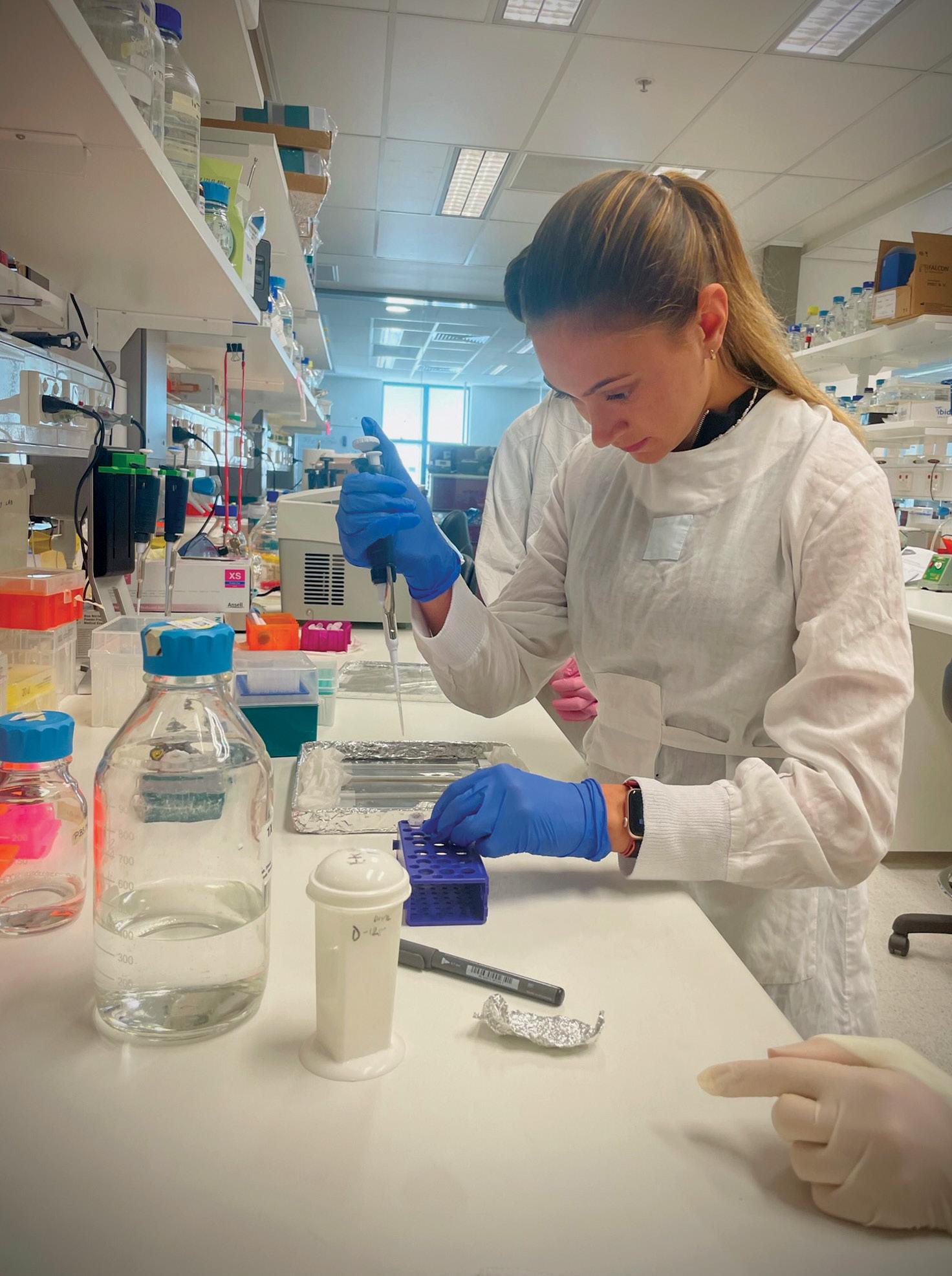
year 12 student
Year 12 student Michaela Loukas explains her love-hate relationship with maths
Ever heard the term ‘maths anxiety’? It’s super common, especially for perfectionists who like to get everything right on the first go. But maths doesn’t work that way – it’s about persistence, trial and error, and embracing the process of problem-solving.
During years 7 and 8 I loved maths. I found it therapeutic just forgetting everything and honing in on one single problem. But by Year 10 I was falling behind in maths and becoming disheartened. For a perfectionist, that was frustrating as I struggled with failure. But once I reframed trial and error as part of the learning process, and saw how I could use maths in creative ways, I fell back in love with it. Now, in science extension, I’ve been doing a year-long project developing my own AI model for breast cancer diagnosis, and maths has been crucial. Concepts like differentiation, calculus and functions help me understand the mechanics behind the deep-learning model I’m developing.
Classmates often ask, “Miss, when are we going to use this in real life?” But maths isn’t as abstract as it’s perceived to be. It’s about developing a way of thinking through logical reasoning, problem-solving and pattern recognition – skills that are invaluable across almost every field of life.
As someone who’s bilingual, I’ve even noticed the synergy between learning maths and learning a new language, as both
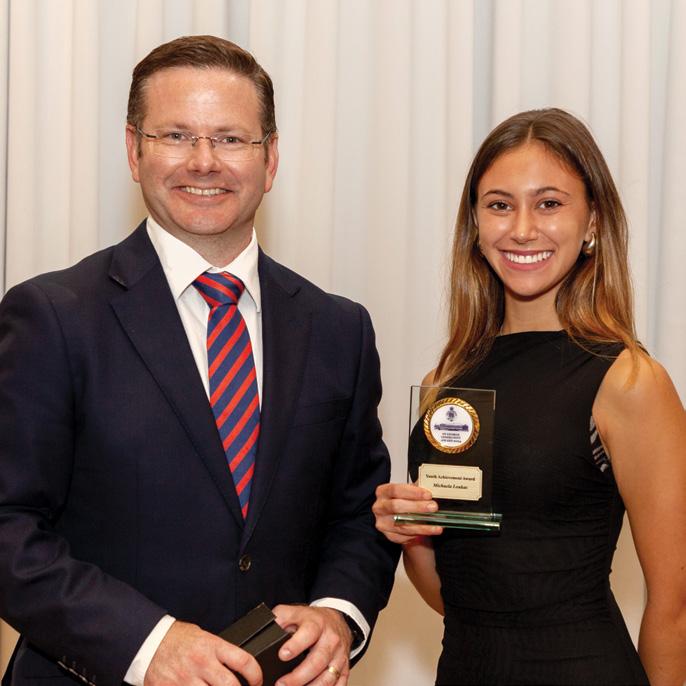
with maths, you’ll learn valuable skills that can be applied to any future career”
require recognising patterns and understanding structure and syntax.
Maths really is the foundation of everything, so I’d advise students to stick with it in their senior years of schooling. Regardless of whether you do extension, advanced or standard maths, you’ll learn valuable skills for any future career.
I hope to pursue a career that combines medicine and technology, and I know that maths will be at the core of both of these fields.
Check out the rest of the mag for all the other interesting careers open to you if you stick with maths!
Year 12 student, Marist Catholic College,
Everyday maths
P6 everydaySolvingpuzzles
Maths can be the key to solving problems in the real world
P8 A–Z of maths careers
Maths is important in so many careers! Here’s your cheat sheet
P10 Data science explained

Data science is the key to unlocking the latest technologies
P11 Will AI replace your maths teacher?



STEM + X =
Combine maths & data (STEM) with your passion (+ X). It’ll help you discover your dream career!
Maths & data + …
P12 Sport
Faster, better, stronger with maths & data
P16 Transport
Choose a career that’s going places

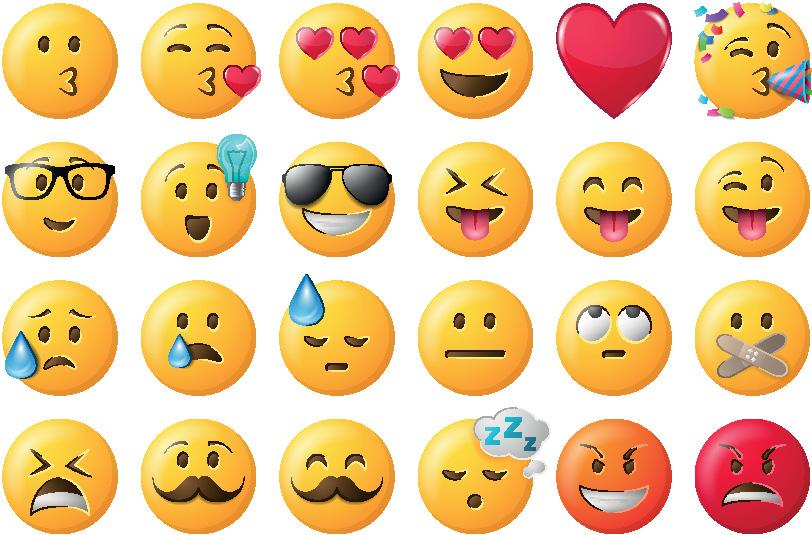
P20 Environment
Land an eco gig that counts

P24 Health
How to solve Australia’s health equation
P26 Business
With data skills, it pays to get into business

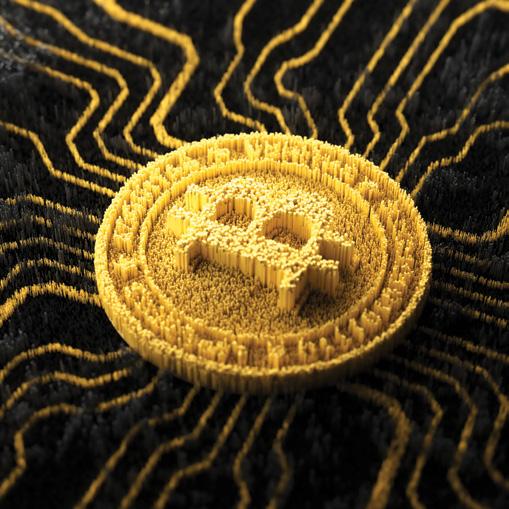
Unsure of where to start? Looking for something new? Got skills but not sure what jobs are suited to them?
Career information can be overwhelming, that’s why we have made it simple for you.
Explore yourcareer.gov.au to:
• find occupations and career information based on your hobbies, skills and interests.
• complete a career quiz to start your career journey.
• search study and training options.
• read real life career journeys from Australian VET Alumni and case studies.
Visit yourcareer.gov.au today!

Download the School Leavers Information Kit for information about:
• study or training options to upskill
• financial support for further study
• how to nail a job interview and more! yourcareer.gov.au/schoolleaver
Sure, maths comes in handy when you’re splitting a restaurant bill, working out travel times or calculating how much that sick hoodie actually costs after the 20% discount, but it’s also connected to real world careers in so many other ways. – Charis Palmer
Maths isn’t just something you do in school – it’s all around you

Maths is essential in engineering and architecture. Civil engineers use central angle calculations to design safe curved roads. Architects apply geometry like adjacent and alternate angles to optimise solar panel placement for maximum energy efficiency.

Firefighters use maths to predict and control wildfires. Factors like wind speed, terrain and rainfall (independent variables) affect how fast a fire spreads (dependent variable). By using formulas incorporating these variables, experts can track fire paths and plan the best way to fight them – and save lives! 1 2 3 4 5 6
In theatre and event productions, lighting specialists use linear and quadratic functions to control stage lights. In game design, vectors enable game developers to incorporate realistic elements like gravity and wind into the gaming environment.

Nurses use time conversions to accurately give medications and fluids, like calculating IV drip rates. Understanding proportions helps them provide safe patient care. In public health, quadratic functions help predict medical service needs, such as estimating demand for mental health support after traumatic events.
In robotics, emotions are broken into mathematical codes to create algorithms, helping robots recognise human feelings. Self-driving cars rely on systems of linear equations to predict road safety moments, like overtaking another car.
Forensic experts use maths to solve crimes after they happen. Inverse trigonometry helps them determine bullet angles or blood drop paths at crime scenes. Functions like arcsin, arccos and arctan allow specialists to uncover details, making maths a powerful tool in forensic investigations.


Looking for a versatile career in a high growth industry? ACU’s double degree in computer science and data science offers technical and theoretical skills to develop real world solutions to the challenges of tomorrow, whilst connecting you to those working at the disruptive edge of tech and data.
Study a Bachelor of Computer Science/ Master of Data Science acu.edu.au/computer-science
Maths is important in so many careers, and for some, it’s the
Interested in maths but confused about where it may take you? Check out our list of careers that require you to have maths skills to succeed. Some may surprise you! – Amy Briggs
Astronomy is all about observing and studying celestial objects like stars, planets and galaxies, which takes serious maths skills!
In this career, you need to be able to interpret results and predict what is going to happen in experiments.
Making and breaking codes for a living is almost like being a spy (spy agencies need cryptographers too). Problem-solving is a must in this field.
In this high-demand career, you’ll help shape the future careers of your students!

A lot of fields outside of STEM involve working with large sets of data, so if you enjoy identifying trends and analysing data – this could be the career for you!
Monitoring and trying to prevent the spread of diseases are skills based in maths.
Using your maths and data skills, you could make predictions for critical industries like the energy sector.
Being able to use ratio relations and knowing shapes that look good to people’s eyes are vital for a career in graphic design.
If you want to improve industries like manufacturing, automotive or retail, this might be the path for you!
Data journalists know how to interpret data and use it to tell stories that others can understand.
Using complex maths and physics, kineticists work out how objects, like big machinery, move.
As a lecturer you can specialise in any part of mathematics that interests you (plus, hopefully research at the same time).

Work for big-name brands in the retail, technology or health spaces to help improve products!
As a nurse it is really important to know ratios and relationships between weight and other body factors when giving patients medication.


Wherever there are people working in an organisation, there is someone needed to make sure that everything runs smoothly.
Making sure that people have the right medication dosage is critical!
Using trials and switching out variables is all part of the job for a quality control inspector.

Robots can be used for almost anything, but they do require a lot of programming, which is where your love of maths comes in!

Surveyors use maths to map out spaces, programming complex algorithms to recreate the space digitally.
Taxes can be tricky, so advisors need a strong base in maths, especially when juggling different tax types for different people.
Planning and developing cities involves a lot of maths to calculate the cost of materials, crunch data and forecast growth.
Developing, trialling and making sure that things look just right requires skills in dimensional thinking and physics.
Meteorologists use complex calculations to predict the weather, often using algorithms they develop themselves.

An X-Ray technician helps doctors diagnose and measure what’s going on in sick patients’ bodies.
It’s important to have someone to check that producers are making the right amount of stuff in industries such as mining, cosmetics, medicine and more!
Maybe you have a passion for endangered animals? Maths is important for tracking the populations of animals both in zoos and in the wild.

From personalised shopping suggestions to space exploration, data science is key to unlocking the latest technologies
Ever wondered how Spotify knows your taste in music so well? Or how Netflix knows what you want to watch? It’s all thanks to data science.
Data science uses different techniques to collect, organise and explore large sets of information to make patterns. This allows businesses to make informed decisions and personalise their products for you. Data science is used in everything from healthcare, to sports and retail. NASA even uses data science for space exploration!


There are three main career categories in data science: data entry, data analysis and data science. These can be split up based on our earlier definition of collecting (data entry), organising (data analysis) and exploring (data science).
#3
Data scientists create models with coding, statistics and AI to solve big problems and shape our future. For example, the Wyss Institute in Boston is using AI to develop artificial bees that can help with crop pollination, climate monitoring and more!
Data science is a fast-growing world spanning many industries. Plus, data scientists can be well paid, and are in high demand! So if you enjoy using maths and technology to solve problems, this could be the career for you! – Saskia Horgan-Catchpole
Data entry is collecting data and inputting it into organised systems such as databases or spreadsheets. Types of data can range from customer names to addresses, and financial details to transcribed audio.
#1 #2
Data analysis is about organising, cleaning and studying data to answer specific questions. It can provide businesses with useful insights, such as the best- performing products or the least-watched shows. Careers that use data analysis skills include astrophysicist, bioinformatician, infrastructure architect and many more.


AI has already beaten humans at games like chess and Go, so does that mean we can all quit maths and let machines do it for us? Soz, but no.
AI can handle large datasets, perform complex calculations and even find patterns that might take humans much longer to spot, but there are still plenty of things it can’t do.
A lot of maths tasks require creative thinking, like formulating problems or coming up with interesting questions for maths to answer.
AI is awesome at solving problems that have already been defined, but many important mathematical discoveries come from the formulation of new problems – something that AI isn’t capable of on its own.

Teaching students to think critically and approach problems creatively is a deeply human skill. Good maths teachers encourage students to ask questions and develop strategies for tackling challenges.

Maths connects many different fields, such as physics, economics and engineering. AI, though powerful, works best with specific tasks and data inputs, while mathematicians understand how maths interacts with other disciplines.
Maths teachers also use their people skills to read the room and adjust their teaching methods accordingly. Whether it’s using different examples or helping students who are falling behind, teachers can adapt in real time.
AI will definitely change how maths is taught. But you’ll still need your maths teacher to foster creativity, adapt to your learning needs and help you understand why maths is important. – Charis Palmer
Check out these STEM role models using maths and data in their sports gigs.
Dr Stephanie Kovalchik, senior manager of data science
In her 9-to-5, Stephanie uses maths processes like statistical modelling, probability and machine learning to quantify things like how an athlete’s physicality might affect their performance.
Read more: bit.ly/cws_ datascientist
Jake Ward, sports scientist

umbers are a huge part of sport. Data from matches and training sessions gives coaching staff key info, like top speed, number of interactions and distance travelled – knowledge that can help them decide how to best utilise athletes, improve match results or tailor training sessions.
If you’re keen on mixing maths and data with sport, there are plenty of awesome study and career paths to jump on.


After initially studying business, Jake retrained and now has a career that’s taken him from the Olympics to the Queensland Reds rugby team and the Queensland Academy of Sport!
Read more: bit.ly/cws_ strengthcoach
Dr Tuguy Esgin, sports scientist
A PhD in exercise physiology and a Master of Business Administration have proved to be a formidable combination for Tuguy. His career has seen him tackle noncommunicable diseases in Indigenous health through exercise and sports science.
Read more: bit.ly/cws_ sportscientist

You could be a sports statistician. These number crunchers gather real-time info on sports performances and use their maths and computer skills to create formulas, programs and apps that turn stats into new data. Coaches and athletes then use that data to strategise about future games or competitions, and journalists and sports organisations use it to report on matches, and track performance.
Or, you could get into sports data analytics. This field is all about interpreting data to gain insights that could assist with performance, player health and gameplay. In this role, you also get to analyse fan behaviour, including what merch they buy and social media trends!
Then there are sports scientists. They use biomechanics, psychology, biometrics and data to improve an athlete’s performance and help them recover from injuries by designing personalised training and rehabilitation programs. Sports scientists can work anywhere from sporting organisations and gyms, to health clinics and universities.
If these jobs sound interesting to you, then get inspired by the stories on the following pages, then start hatching your own game plan for your future career. – Louise Meers
“Sport has taught me the value of consistency, adaptability and resiliency in high-pressure environments, whilst my degree in physics and mathematics has introduced me to critical problemsolving skills and a large toolbox of analytical approaches.”

Meet Cameron McEvoy, the reigning Olympic champion in the men’s 50m freestyle, and the first Australian man to win a gold in this event.
You might’ve seen his face while cheering on the Australian swim team at the 2024 Paris Olympics. But did you know that Cameron also studied maths and physics at uni? He’s been known to show off his love of STEM in the pool too. At the 2016 Olympic trials, he wore a swim cap displaying the signal of two merging black holes, and a year earlier he donned one with a Feynman diagram. What’s even cooler is that he uses maths to improve his sporting performance. One way he’s done this is through performing tests, producing graphs and velocity profiles, then using his maths skills to compare them and improve his training program. By training more efficiently, Cameron was able to significantly cut back how far he swam each week. Plus, he got to ditch the 5am starts every morning. Thanks, maths and data!

Check out the Numeracy In Sport series on ABC iview. It explores how maths is used in sports like sprinting, tennis, basketball and football, and why it pays to be numerate! We love the real-life examples and demonstrations in these five-minute episodes.
START YOUR CAREER HERE

MATHS&DATA + SPORT + STUDY
Bachelor of Exercise and Sports Science, Macquarie University
Bachelor of Data Science, Deakin University
Bachelor of High Performance Sport, ACU
Bachelor of Data
Science, QUT
Bachelor of Statistics, ANU
MATHS&DATA + SPORT + JOBS
Sports statistician
$99K–$174K
Sports scientist
$70K–$120K
Data analyst
$58K–$109K
*Salaries according to salaryexpert.com, Exercise and Sports Science Australia, and payscale.com

Petra isn’t just a Year 12 student from Mparntwe (Alice Springs), she’s a force of nature – especially when it comes to her love of cars and racing.
“It’s been in my blood all my life. Both my parents race off-road and I’ve raced speedway for the past six odd years,” she says.
Maths is Petra’s favourite subject at school – her passion for it even led her to win the Indigenous Science Achievement Award at Flinders University. Now, she’s learning just how much maths is involved in racing cars.
Petra recently completed a Certificate II in Automotive, for which she did a training work placement with the V8 CoolDrive supercar team.
In her certificate, Petra says she got to experience what it felt like “to be a real mechanical engineer,” as she pulled cars apart, looked at all the components and put them back together again.
racing has been in my blood all my life. i’ve raced for six odd years”
Year 12 student
Petra would also measure and analyse her lap times from new race meetings and previous race meetings.
“I’d compare the two and see where I’d improved. It could be by one-point-something seconds,” she says.
In racing, you also need maths skills to monitor fuel consumption. This can vary a lot depending on how you drive and how many kilometres the race is. “My tank usually takes up a whole race meet,” Petra says.
Initially, Petra wanted to be an engineer with the supercar team but now she plans to explore her engineering options through the Australian Defence Force Gap Year. This cool program will allow her to try out different areas of engineering while getting paid, without any long-term commitment!
Her tip for anyone wanting to balance studying a VET course while in high school?
“Look for advice from your teachers. They took into consideration that I was only in school four days a week and would give me extensions, or occasionally sit with me during lunchtime or recess.” – Samantha Wheeler
Dr Emma Millett helps top athletes push their limits Here’s what a day at her job looks like!
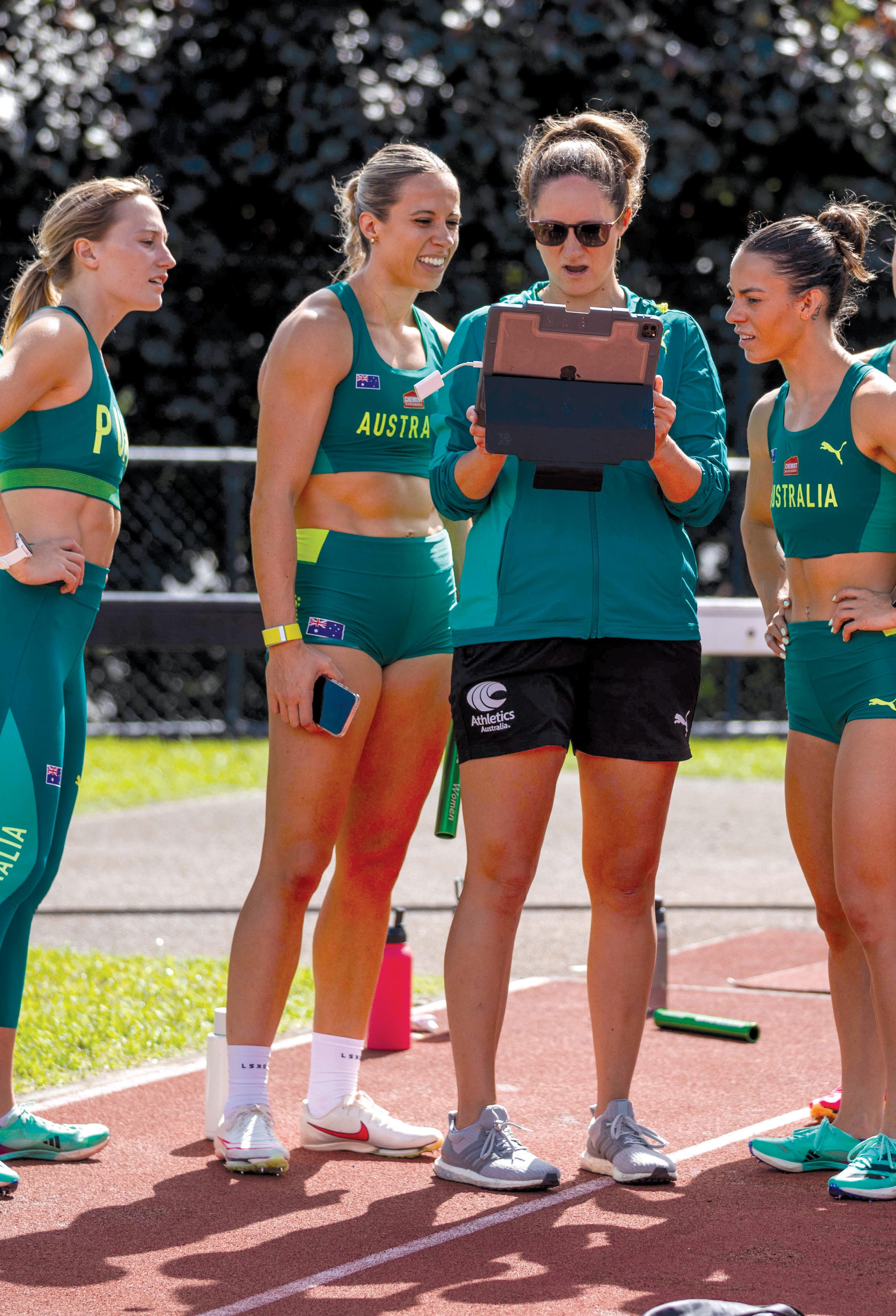
Emma is a senior biomechanist at the NSW Institute of Sport (NSWIS) and the national lead of biomechanics for Australian Athletics. She works with Australia’s top track and field athletes to help them perform at their peak. Using data and video, she studies how athletes move and helps coaches fine-tune every step, jump and throw.
“High-performance sport is an iceberg – you only see the results, but there’s a huge team behind the scenes,” she says. – Gemma Chilton

9am
“I start the day at the track working with one of our key squads and coaches here at NSWIS,” says Emma. “That often involves testing and feedback using laser, Optojump and video to assess and monitor an athlete’s technique.”
Optojump is a sensor system that tracks things like jump height and ground contact time – details too quick to catch with the naked eye. These tools help Emma and the coaching team fine-tune an athlete’s movements to improve their performance.
10am – Data deep dive
“Then it’s back to the office to do some number crunching and review from the session, lab testing or from a competition I had travelled to on the weekend.”
1pm
“A coach or performance team member – physio, strength and conditioning coach, or sports psych – will often stop by my desk to chat through reports, key thoughts and feedback, and then plan for the next session.”
4pm – Tech and innovation
In the late arvo, Emma will connect with others on key projects. “One we are working on at the moment is with our engineering lead at Australian Athletics, where we are working on prosthetic blade or wheelchair adjustments.”
6pm – Packing for adventure
Emma’s work takes her across Australia and overseas. “The day will often wrap up with packing for either another training session, national camp, competition or trip,” she says.
More than a billion people use Google Maps every month for everything from navigating rush hour to finding the fastest bus route. We’ve all used some form of navigation system to help us get where we need to go. Now what if I told you that maths and data are the secret ingredients in how navigation systems like Google Maps work?
Modern navigation systems rely on large amounts of data including road maps, real-time traffic information, speed limits and even business locations. Data scientists work tirelessly to collect this information and write algorithms that will figure out your best route, or give you real-time traffic
The Australian government will invest more than $120 billion in land-based transport projects across Australia over the next 10 years. More money means more jobs, so there’s never been a better time to start a career in transport.

updates. That’s just one of the many careers open to you if you apply your maths and data skills to the transport world.
Think about it: Who makes the bus routes? Who develops the machine learning models that predict traffic jams? Data analysts! How do parcels get delivered to your door? Logistics analysts do just that! These in-demand professionals will shape the future of how we transport things – not just ourselves, but our food, clothes and services too.
A strong foundation in maths, data and computer science can open doors across Australia’s transportation sector. Ready to start your route? – Samantha Wheeler

Skills you need if you want to become a data analyst
•
Logical and critical thinking
• Communication
• Problem-solving
• Time management

Did you know Google Maps was made in Australia? Danish brothers Lars and Jens Rasmussen developed the platform for Google Maps in Sydney, then founded Where 2 Technologies with Australians Neil Gordon and Stephen Ma in 2003. Google bought their company the following year.

The National Freight Data Hub works closely with industry and government, collecting and analysing the transport of bulk supplies. The team finds gaps and opportunities to ensure all the stuff we need gets delivered to the right place, at the right time. Below are some of the projects they currently have on the go.


Provides massive amounts of data on how and where things are shipped to help businesses, governments and even scientists with their research.
Focuses on all roads across Australia, getting agencies to share the road conditions. This could be blocked or damaged roads, traffic jams and any other issues that may need to be addressed.
Tracks every truck across Australia to help us understand traffic jams, plan better roads and help our truck drivers get where they need to go as quickly and as safely as possible.
Keeps track of all our trains, from where they are, to how fast they go, how much they can carry and where each train starts and finishes. This database is used to plan better train tracks, ensure trains run on time and resolve issues.
MATHS&DATA + TRANSPORT + STUDY
Bachelor of Data Science, QUT
Bachelor of Science (Data Science), Curtin University
Bachelor of Planning, Macquarie University
Bachelor of Mathematics (Data Science), University of South Australia
Graduate Certificate in Smart Transport and Mobility, QUT
MATHS&DATA + TRANSPORT + JOBS
Operations analyst
$57K–$96K
Logistics analyst
$62K–$97K
Data scientist
$69K–$137K
Transport planner
$64K–$139K
*Salaries according to payscale.com
Check out some of the ways the ‘M’ in STEM is used in train transportation!
Algorithms
Are part of all transport apps. They help find the best or fastest route to take and predict travel times using real-time data.
Graphs
Very helpful when creating railway system maps!
Geometry
Used to design trains and track alignments.
Weight
The measurement used to calculate how heavy a train is and the capacity of the tracks.
By analysing train travel data like passenger demographics, travel patterns (including time of day and distance), and origin and destination details, train fares can be set for peak and off-peak periods.
How fast a train travels is one of the factors considered when making train timetables. The length of the train and its stopping patterns (when it stops and for how long) are other important elements.
This combines maths and computer software, helping railway operators to decide what train to use and what kind of drivers are needed to operate them. It can also be used to work out how to get the most out of fuel and energy. – Louise Meers
Are needed when designing and creating signs for around the train station. The sizing and spacing of the letters are also important here.
Allows mechanical engineers designing and maintaining trains to calculate velocity, acceleration and displacement of objects (a.k.a. change in position of objects). This is key to understanding and predicting how a train’s mechanical system will behave when it’s making trips up and down the line.
Live in Sydney and catch the train? Next time you’re on board, look for the carriage number. Use these four numbers to try to make a total of 10. You can add, subtract, multiply and divide to get your answer. Have fun!
Land yourself an eco gig that counts by skilling up in maths and data
Maths and nature might seem like an odd match, but the unlikely pair go way back. Name a career in environmental science and chances are there’s a numbers-based skill to go with it! Land conservationist? Statistics! Marine biologist? Differential equations! Climate scientist? Data analysis!
And with Deloitte predicting that more than 300 million additional ‘green collar’ jobs could be created by 2050 (think: environmental scientists, climate change analysts and data scientists) the probability of finding a gig that suits you is pretty high.






Protecting our environment requires a deep understanding of different species – and not just their biology. Up there with one of the most valuable maths-heavy tools is mathematical modelling – the process of making data-backed predictions to navigate some of the world’s most pressing ecological problems. Climate change models allow scientists to study environmental phenomena (both natural and human- caused) and plan for future climate-related challenges. Dynamic modelling, meanwhile, helps us understand ecological population growth and how different species might respond to challenging conditions.
And if you’re worried about finding a job, don’t be! A quick search of in-demand maths and environment job titles – like environmental statistician, renewable energy analyst and environmental engineer – proves that all the cool kids (read: employers) are hiring.
MATHS&DATA+ ENVIRONMENT + STUDY
Bachelor of Engineering (Environmental and Climate Solutions), The University of Adelaide
Bachelor of Environmental Management, UNSW
Bachelor of Environment and Sustainability, ANU
Bachelor of Mathematics /
Bachelor of Science, The University of Queensland

CSIRO is crying out for maths grads to map forests, urban areas and marine environments, while the Bureau of Meteorology is hiring meteorologists to study weather patterns and climate data. You could even work in a zoo as a wildlife ecologist, collecting and analysing data and running statistical modelling programs to protect endangered or vulnerable species.
Major plus

Kickstarting a maths and environment pathway isn’t exactly as easy as pi. At school, you’ll need to knuckle down in maths and digital technologies, and basic biology knowledge will beef up your CV. But don’t stress about being top of three-unit maths – if communication and English are your thing, they’re important too.
At university, pathways are as varied as the employers hiring! You could do an environmental science degree and take units in ecology and maths, or pursue a Bachelor of Mathematics majoring in data science. And don’t forget about non-uni pathways – there are plenty of diplomas and certificates to choose from.
If you’re itching to get experience while still studying, become a citizen scientist! Counting local wildlife and monitoring nearby weather patterns are great ways to start collecting green data for good. – Cassie Steel
MATHS&DATA+ ENVIRONMENT + JOBS
Data scientist
$69K–$137K
Environmental scientist
$60K–$99K
Statistician
$63K–$102K
*Salaries according to payscale.com

Maths is everywhere, even in nature!
How can we use it to solve Earth’s wildest mysteries?
Ever wondered what would happen if you combined maths, data, nature and Sherlock Holmes? You’d get a mathematical ecologist – a detective of the natural world! Mathematical ecologists use numbers and patterns to help find solutions to some of the world’s most pressing conservation problems.
Mathematical ecology uses applied mathematics and models to study the environment, including animal populations, life cycles and interactions. By collecting data in nature and analysing it, mathematical ecologists can identify patterns, predict changes and come up with solutions for threatened species. So if you love wildlife, mathematical ecology could be the career for you! – Saskia Horgan-Catchpole
A mathematical model is a real-life situation expressed as a series of mathematical equations. Mathematical ecologists input components such as duration of ice melting, animal migration times, population loss and climate change to better understand ecosystems and the challenges they face.
Climate change researcher: Predict how global warming will affect ecosystems.
Statistician: Use models to predict changes in populations and understand threats.
Eco-game developer: Create games that simulate ecological models in a realistic and entertaining way.
Statistical analysts interpret data to understand complex problems. Data can range from pollution levels to animal sightings, revealing patterns that could have gone unnoticed.
Researchers observe nature, collect information, and then either analyse it themselves or pass it along to a statistician or mathematical modeller.
Forest ranger: Survey the health of forests to monitor deforestation and species changes.
Conservation scientist: Use field data to protect species.
University researcher / professor: Combine fieldwork and data analysis to teach the next generation of mathematical ecologists.


Epidemiologist: Use data to predict disease outbreaks and changes in ecosystems.
Remote sensing specialist: Observe forests, oceans and animal habitats using satellite and drone data.
Environmental policy analyst: Use statistics to advise governments on environmental laws and policies.
Michael develops mathematical tools to protect threatened species and ecosystems. His work supports conservation decisions by helping governments and non-government organisations apply the methods he develops.
“Lots of species are threatened with extinction – too many for us to save them all – so we need to work out which actions we can afford to do, and which species we can afford to save,” Michael says.
The best part of Michael’s job? Knowing his work is having a positive impact on wildlife and the planet.

dr Michael Bode Mathematics professor
Michael’s advice for future ecologists
“If you like working with numbers, you’ll be invaluable. Conservation is full of people who want to touch the animals – it’s missing people who want to count them!”
Harry Roberts is proof that STEM careers can grow from any age – he kicked off his arboriculture apprenticeship at 27! harry roberts arborist

When Harry finished high school he had no idea what he wanted to do! But having completed his mature-age apprenticeship and a Certificate III in Arboriculture, he now leads his own arboriculture team at Brisbane City Council.
Before his apprenticeship, Harry did bridge inspections and maintenance. It was through this job that he first realised he enjoyed working at heights. After trying a few different things, he learnt about the Certificate III in Arboriculture and the apprenticeship.
“I liked working at heights and working with people, but I didn’t want to be in an office all day, so I thought I’d give it a try,” Harry says.
Arboriculture might not be the first area that springs to mind when you think of maths careers, but arborists use maths all the time! It helps them estimate the wood’s weight (which is different for every species), as well as the weight load the equipment and rigging point can take. Plus, there’s geometry in shaping tree crowns – the area over which a tree’s branches spread.
“It’s not just about shaping a tree to suit your needs. It’s about learning how to correctly prune a tree to its biology,” Harry says.
Harry’s job also involves understanding the relationship between animals and trees so he can create or maintain animal habitats.
“This means not cutting down dead trees that provide habitat for different critters, creepy crawlies and birds,” he says.
According to Harry, there are lots of emerging fields in arboriculture right now, including a new stream for habitat workers.
“This involves using climbing techniques and elevated platforms to hang nest boxes and create artificial hollows in trees!” – Samantha Wheeler
i liked working at heights and with people, so i thought i’d try it”
Every time you see your doctor, you likely list a bunch of symptoms such as tummy aches, headaches or a new rash. Your doctor will note down all of your symptoms, treatments and history, adding them to a database. If you don’t opt out, this creates your own personal electronic health record, which Medicare maintains. Over 23 million Australians have a digital health record, and this collection is about more than

just information storage – it helps unlock hidden patterns across the health sector.
Teams of health data scientists can collect and analyse huge amounts of data such as age, gender, weight and any history of disease. This data can make health systems more efficient, and it helps doctors make better decisions when it comes to your Epidemiologistshealth. are disease specialists who use this data to collect statistics on health trends across Australia, such
Genomics is the study of all of our genes, and it’s a fast-growing field. It’s so important that Australia has committed to establishing a national genomics body, Genomics Australia, as well as $30 million of funding for its first four years of operation. This initiative focuses on genomic research to prevent disease and provide personalised treatments for patients.
Natalie is a senior research scientist and team lead with CSIRO, where she dives into the intricate world of bioinformatics. She uses biology, statistics and computer science to unveil information in our genomes. This helps us understand the genetic causes of human diseases like cardiovascular disease, motor neurone disease and Alzheimer’s disease.
Natalie started her career with an undergrad degree in biochemistry and microbiology, but she soon realised lab work wasn’t for her.
“I found computers were more predictable; if you write a program, they generally work.”
After graduating, Natalie was awarded a scholarship to do a master’s of bioinformatics in London. She later moved to Sydney thinking she’d only be there for a year, but ended up completing a PhD in bioinformatics at UNSW. She’s now been in the city for 16 years!


In her current role, Natalie spends a lot of her time sifting through large amounts of data.
“Identifying which genes are causing disease is like finding a needle in a haystack, so you need to use high-powered computers, statistics and machine learning to find this needle.”
Dr Natalie A. Twine uncovers secrets in our genetic code using data science and statistics identifying genes is like finding a needle in a haystack”
as increases in hospital admissions or decreases in vaccinations. By looking for recurring patterns, trends and statistics, epidemiologists can determine changes in sickness at a population level. They’ll detect the early warning signs, and in doing so can help to prevent what could otherwise become a ‘health apocalypse’ by using data-driven insights.
If you’re keen to solve health mysteries with data, but want to focus on individuals, bioinformatics might be for
you! As a bioinformatician, you could spot patterns in molecular and genetic data, like DNA or protein sequences. Combine those skills with computer science, algorithms and stats, and you might even be on your way to providing personalised healthcare, like cancer treatments tailored to specific gene mutations.
And guess what? Australia is investing billions into Medicare to make it even stronger. More money means more doctors, epidemiologists, bioinformaticians and data scientists! – Samantha Wheeler
MATHS&DATA + HEALTH + STUDY
Bachelor of Data Science, QUT
Bachelor of Health Sciences / Bachelor of Mathematical and Computer Sciences, The University of Adelaide

Master of Science (Bioinformatics), The University of Melbourne
Graduate Certificate in Bioinformatics, The University of Queensland
MATHS&DATA + HEALTH + JOBS
Biostatistician
$77K–$118K
Epidemiologist
$67K–$116K
Data scientist
$69K–$137K
Bioinformatician
$50K–$98K
*Salaries sourced from payscale.com START
Sharpen your data skills and you’ll find it pays to get into business
Forget what you’ve seen in the movies because there’s more to a job in business than rocking a fancy suit. Sure, it can be stressful, but a business career can be seriously rewarding – and a chance for maths and data grads to make a real difference.
Business makes the world – and economy – go round. There are plenty of high-powered business jobs for skilled maths and data professionals, from working in management, to finance and accounting, entrepreneurship, information technology and even trading in financial markets. There’s also a stack of math majors in supporting roles, like chief financial officer, market dealer, share advisor, crypto broker, cyber security expert and data analyst.
And the best bit for those keen on making a buck in business? By combining maths and data with business, you’ll open the door to high-paying

positions like investment banker, hedge fund manager, and private equity and actuarial roles. If you’re a confident problem-solver and can see yourself tackling complex probability equations all day, every day, this is a reliable industry to craft a career in.

Although jobs are secure, business pathways can be as non-linear and all-over-the-place as the stock market! If cryptocurrency is your jam you could do a business degree and fill it out with blockchain, investment and data-heavy units. Or, doing a straight-up Bachelor of Mathematics will skill you up in all the things (Stats! Graphs! Data! Probability!), so you can pick and choose an area to specialise in. It’s worth looking into business courses at TAFE too.
Already dreaming of jobs? Check out investment groups IMC Trading and Optiver if you want to work with cool clients. – Cassie Steel
Hugh Crawford has turned maths, science and computing into a career managing IT cloud infrastructure projects

Studying at Macquarie University led Hugh down a path exploring maths, computing and IT infrastructure, ultimately landing him a job as an Agile project coordinator. In this role, he keeps a team of 20 engineers on track, helping businesses navigate the complex world of cloud infrastructure. With dozens of clients and projects on the go at once, he never gets bored!
Hugh’s journey started with a Bachelor of Advanced Science at Macquarie University, for which he was offered early entry through the Macquarie Leaders and Achievers program. He loved exploring the different subjects Macquarie offered – a minor in computer science is what first sparked his interest in IT infrastructure.
Hugh was involved in many of Macquarie’s extracurricular offerings, including the Maths Society. It was here that he developed his project management skills – having his peers tell him how great he’d be as a project manager sealed the deal!

Now, as an Agile project coordinator with a Cloud DevOps team (software engineering team) at AC3 (Australian Centre for Advanced Computing and Communication), Hugh is at the heart of the action.
every day is different and i get to work across many areas”
“Degrees and qualifications will get you interviews, but soft skills are becoming increasingly important, even in technical jobs. Public speaking, attention to detail and problem-solving are half the difference between junior and senior engineers.”
“Every project is different, and I get to work across so many areas of IT. One day it’s cybersecurity, the next it’s optimising business management systems,” he says.
One of Hugh’s coolest projects involved ethical hacking – yes, hacking! During COVID, he led a project designing Raspberry Pi kits that allowed penetration testers to remotely test systems for security vulnerabilities.
“I remember looking at it at the end and thinking, ‘wow, my job is awesome!’”
When he’s not managing projects? Hugh is a self- confessed adrenaline junkie, scaling mountains and abseiling into canyons. – Saskia Horgan-Catchpole


The Maths That Made Us, Michael Brooks Dive into how numbers have enabled explorers to travel across the seas and astronomers to map the skies. Learn how they’ve won wars and halted epidemics, and discover how they contribute to everything from the design of your house to the smartphone in your pocket.
Love Triangle: The Life- changing Magic of Trigonometry, Matt Parker Why can no two people ever see the same rainbow? What happens when you pull a pop song apart into pure sine waves and play it back on a piano? The answer to each of these questions and more can be found in the triangle.

Want to work in data?
These high school subjects will help get you there: ✔ Maths ✔ Computing studies ✔ Engineering studies ✔ Business studies ✔ Economics
Hidden Figures, Netflix
This movie tells the true story of three incredible African-American women who worked at NASA in its early years. Watch them as they use maths to calculate flight trajectories needed for safe re-entry and for orbiting Earth.

The Man Who Knew Infinity, SBS On Demand
Follow self-taught Indian mathematician, Srinivasa Ramanujan as he leaves home to attend Trinity College in England in 1931. Here, he must fight to prove his groundbreaking theories.
The International Mathematical Olympiad Get ready for the world championship mathematics comp for high school students, which will be held on the Sunshine Coast from 10–20 July, 2025. We can’t wait to see the brightest young minds from around the world battle it out with their epic problem-solving skills! Find out more at: imo2025.au

The Random Sample
Find out how maths, data science and statistics can help make sense of a world full of uncertainty and randomness! In this podcast, you’ll hear about the impact that maths and data professionals are making.
Careers with STEM: Science 2025 is a publication and trademark of Refraction Media. Copyright © 2025 Refraction Media, all rights reserved. No part of this publication may be reproduced in any manner or form without written permission. If you would like to reproduce anything from this magazine, email: info@refractionmedia.com.au.
We acknowledge the Traditional Owners of country throughout Australia and recognise their continuing connection to land, waters and culture. We pay our respects to their Elders past, present and emerging. This issue went to press on 14 April 2025. Printed in Australia by IVE.
Cover image: AAP Image/Dave Hunt
Produced and published by: Refraction Media
Co-founder, CEO & Publisher : Karen Taylor-Brown
Partnerships Manager : Rachel Jones
Managing Editor: Charis Palmer and Jasmine Fellows
Deputy Editor: Louise Meers
Editorial Coordinator : Samantha Wheeler
Sub Editor: Amelia Caddy
Art Director: Katherine Power
Writers: Amy Briggs, Saskia Horgan-Catchpole, Louise Meers, Charis Palmer, Cassie Steel, Samantha Wheeler
SUBSCRIBE AND ORDER COPIES: CareerswithSTEM.com /subscribe
EDITORIAL & ADVERTISING ENQUIRIES: Email: info@refractionmedia.com.au
POSTAL ADDRESS: PO Box 154, Oyster Bay, NSW 2225, Australia CareerswithSTEM.com
ISSN 2209-1076

